GUIDE TO NAKSAN TEMPLE IN KOREA’S EAST COAST
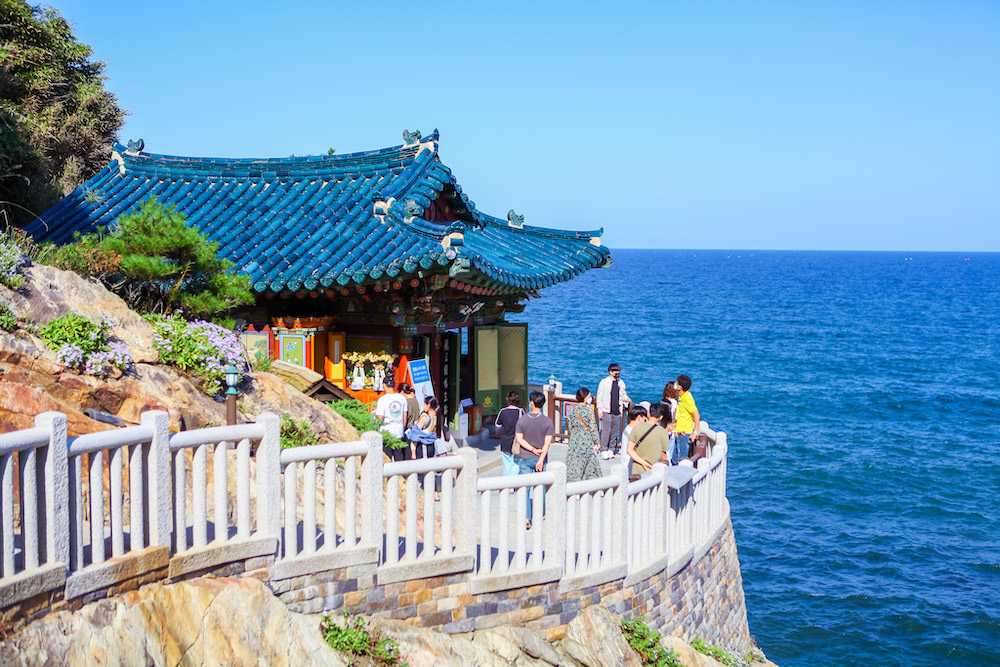
Naksan Temple or also called Naksansa (낙산사), is a gorgeous temple located on the east coast of South Korea, in Yangyang (more info about Yangyang here).
The east coast of South Korea is famous for its beautiful beaches, pine trees, and Seoraksan, one of the best mountains to hike in Korea.
However, there is one more thing that you should absolutely add to your bucket list of things to do on the East Coast, and this is Naksan Temple!


In a Nutshell:
There aren’t many temples right by the sea in Korea. The most famous one is in Busan, and it’s called Haedong Yonggungsa Temple (more info here).
Together with Haedong Yonggungsa, Naksan Temple is one of the only coastal temples in South Korea. It sits right on top of a cliff facing the sea. Which makes the scenery of Naksan Temple breathtaking.
The Naksansa, or Naksan Temple, is located in Mount Obong, one of the famous three mountains along with Mount Gumkang and Mount Seorak in the eastern part of the Taebaek Mountain Range.
Dedicated to Gwaneum, or Avalokitesvara, the Bodhisattva of Compassion and the most popular deity in Korean Buddhism, Naksansa also offers Temple Stay Program (more info here).
In this post we will let you know about the history of this unique temple, how to get there, and the main sights inside the temple.
History of Naksan Temple in Korea
Naksansa Temple is located 4 km north of the famous Naksan Beach (one of the best beach in South Korea). The temple has a history spanning over 1,300 years.
It was built by the great monk Ui-sang, during the reign of Munmu, the 30th king of the Silla dynasty (-57 ~ 935), and counts among its monuments: a pagoda of seven floors, a bronze bell and the door of hongyaemun just to mention a few.
Returning from a study trip to China during the Tang Dynasty, Ui-sang came into contact with the Bodhisatva of Compassion while he was praying. He decided to build a temple at the same location, this is where the Naksan Temple was built.
Naksan Temple was destroyed multiple times during its history. In the year 858 (the 2nd year of the reign of King Heonan of Silla), the Buddhist monk, Beomil Daesa (Grand Master Beomil) rebuilt the temple, but it was again destroyed by the Mongol invasion in 1231. In 1467 (the 13th year of King Sejo’s reign of the Joseon dynasty), the temple was greatly enlarged by Royal order. However, it was still destroyed during the Imjin War and Byungjahoran War.
Again, it was rebuilt in 1624, 1631, and 1643 (the 1st, 9th, and 21st year of King Injo reign of the Joseon dynasty). It was burnt down in 1777 (the 1st year of King Jeongjo’s reign of the Joseon Dynasty) and was rebuilt the following year. Quite a tragic past indeed!
How to get to Naksan Temple on the East Coast of Korea?
- ADDRESS: 100, Naksansa-ro, Ganghyeon-myeon, Yangyang-gun, Gangwon-do (강원 양양군 강현면 낙산사로 100). Naksan Temple is located at the very end of Naksan Beach in Yangyang.
- Getting there by car: the easiest way to get to the east coast of South Korea is by car. It takes about 3h from Seoul to reach Naksan Temple.
- Getting there by public transport: Another convenient option to get to the east coast is by taking the KTX to Gangneung, and then a public bus or taxi to Naksan.
- You can also take a bus directly from Seoul at the Seoul Express Bus Terminal in Gangnam.
What to see in Naksan Temple?
Uisangdae Pavilion
The pavilion was built in 1925 to honor Monk Uisang (625-702), who founded Naksan Temple during the unified Shilla period (668-935). It is said that the pavilion stands on the spot of where Uisang himself used to meditate.
This place has been known as Uisangdae, meaning “Uisang’s point”. The pavilion, together with the Hermitage, is considered one of the eight famous scenic sites of the Gangwon-do Province coastline. The place is also well known as a great location for observing sunrises.
Hongnyeonam Hermitage of Naksan Temple
This hermitage affiliated with Naksansa Temple was established in 671 when Monk Uisang. The hermitage is located on a cliff by the seashore to the northeast of the temple. The name Hongnyeonam means “Hermitage of the Red Lotus.” It comes from a legend about the founding of the hermitage that says that Uisang saw a blue bird fly into a cave in the rock and never reappear again. He interpreted this as an auspicious sign and prayed for seven days, and nights in front of the cave.
Eventually, Avalokitesvara (Bodhisattva of Great Compassion) appeared in front of him inside a red lotus, and so Uisang established a hermitage on that spot. Because of this story, the hermitage enshrines a statue of Avalokitesvara and is also known as “Avalokitesvara’s Grotto.” The Avalokitesvara statue was regilded in 1683, at which time a relic of the Buddha is said to have fallen from the wooden canopy above the statue.
Later, in 1692, a stupa was made to enshrine the relic. The current hermitage was newly constructed in 1869 after it collapsed in 1866 due to heavy rain. In April 2005, a forest fire devastated Naksansa Temple destroying several worship halls, but luckily, Hongnyeonam Heritage survived intact. The hermitage has, long been regarded as one of the eight famous scenic sites of the Gangwon-do Province coastline, together with the adjacent Uisangdae Pavilion, due to the aesthetic beauty of its location on a cliff above the sea.
Botajeon Hall & Lotus Pond
After you visit Hongnyeonam, head more inland. You will first pass through the beautiful Lotus Pond. In the background, you will have Botajeon Hall, the mountain behind, and on your left, you can start seeing the most famous statue in Naksan Temple: Avalokitesvara
At the lotus pond, you can try to throw some coins inside the Buddha’s bowl. We actually managed to throw one inside. It’s not that easy, as the Buddha is a bit far from the path. Try it yourself, and make sure to make a wish first.
After the pond continue your way to Botajeon Hall. This is a beautiful hall. We highly recommend that you go inside visit the temple and check out the golden Buddha.
For the next part of your visit, you will have to climb a steep path and some stairs. But it will be all worth it! Trust us 🙂
Avalokitesvara Bodhisattva Statue
This is one of the main sight inside the temple. This massive stone statue depicting Avalokitesvara was constructed from 1972 to 1977. It is known in Korean as “Avalokitesvara of the Seawater,” as it stands atop the cliff at the edge of Naksan Temple with its back to the East Sea.
The statue, weighing over 700 tons, was made from high-quality granite deposits from Iksan, Jeollabuk-do. The statue measures 16 m in height, 3.3 m in circumference, and 6 m in width at its widest part.
Avalokitesvara is depicted standing on a pedestal shaped like a blooming lotus filower. The pedestal is decorated with carvings of two dragons in the front and the Four Guardian Kings on either side. On the ground around the pedestal is a depiction of the Wheel of Law (Dharmachakra), consisting of 108 stone slabs that form the wheel and 48 stone slabs that form the spokes. This feature was installed in 2008 to commemorate the recovery of the temple after the fire in 2005 and to wish for the temple’s future prosperity.
Enjoy the great panorama at the top of the mountain
From the statue of Avalokitesvara, you can enjoy a fantastic view, one 1 side to Naskan Beach and on the other side to the massive mountain ranges and Seoraksan (full guide to visit Seoraksan National Park here). As it was midday in a very hot day for us, we took a long break, sitting by the edge of the mountain, admiring the stunning view.
On the way back we took the Path of making a dream come true:
Path of Making Dream Come True
This short but pleasant path through a little forest was a peaceful moment to rest and enjoy the cool breath from the mountain during summer. The path leads is just next to Avalokitesvara. It leads to another part of the Temple, to see more halls and the famous Bronze Bell.
Dongjong Bronze Bell
This massive Bronze Bell was built by the instruction of King Yejong in the Joseon Dynasty in honor to his father, King Sejo. The King had close ties with the Naksan Temple. This bell was one of the historical monuments built before the 16th century in the Joseon dynasty and an important historical material to study traditional bells from that time. In 2015, during a very bad forest fire around Naksan Temple, the bell slightly melted, unfortunately…
It was then restored the following year and is today one of the highlights of Naksan Temple.
Sacheonwangmun, The Gate of the Four Guardian Kings
Sacheonwangmun, meaning “Gate of the Four Guardian Kings,” is traditionally the gate on the path leading into the worship area of a Buddhist temple. It is believed that the Four Guardian Kings, whose statues or depictions are commonly enshrined inside the gate, repulse evil spirits as visitors enter the temple. The Four Guardian Kings were originally deities from ancient India, but after the appearance of Buddhism, they took on the role of protecting the Buddha and his teachings while standing on Mount Meru and watching over the four cardinal points.
They also have the duty to observe whether people are following Buddha’s teaching and to guide them on the right path. The statues of the Four Guardian Kings enshrined in this gate are said to have been made near the end of the Joseon period (1392-1910).
The Gate, almost marks the end of your visit to Naksan. From there you can walk back to the main entrance.
Write a wish and tie it inside the temple
All around Naksan temple, you will have the opportunity to write a wish on a provided yellow ribbon. We wrote our wishes next to the statue of Avalokitesvara.
Enjoy a drink in the beautiful terrace overlooking the sea
Before leaving, you can decide to stop at the souvenir shop, but also have a drink in a gorgeous setting. The outdoor area is overlooking the sea. It’s the perfect spot to get a tea and some Korean snacks as well as to feel the energy from Naksan Temple. Enjoy the moment…
Other important information about Naksan Temple
- Admission: Adults W4,000; Teenagers & Students W1,500; Children W1,000
- Parking: there is a parking right at the entrance of Naksan Temple. You will need to pay W4,000 for the parking.
- Opening Hours: 6:00am ~ 8:30pm
Other things to do nearby
Naksan Beach
Naksan Beach is one of the most popular beaches in Yangyang but also one of the most beautiful in the country. For us, it is certainly one of the most beautiful beaches on the East Coast. The long stretch of white sand and pine trees is absolutely gorgeous. Whenever we visit Yangyang, we like to take a long walk on Naksan beach. It is one of the most relaxing things to do. We also enjoy the sunset from there.
At Naksan Beach, you can also enjoy various seafood restaurants and cafes.
READ: BEST BEACHES IN SOUTH KOREA
Hyuhyuam Hermitage
Hyuhyuam Hermitage is another beautiful temple located by the sea. In English it means “Rest and Rest Again”. You will quickly understand why, as this place is so relaxing.
The temple has a few large halls and big white statues, but the part we liked the most, is the small hidden beach and the path that leads to a flat rock by the water. We stayed there for quite a while just listening to the sound of the waves crashing against the cliff.
Where to stay near Naksan Temple?
If you want to combine a visit of Naksan Temple, with Naksan Beach and also go hiking around Seoraksan (full guide here), then we recommend staying near Naksan Beach. Here are a few hotels worth checking:
Hotel Two Y in Naksan Beach

Our last recommendation is actually at Naksan Beach. This is one of our favorite beach in South Korea, and Two-Y Hotel, is located right in front of it, with a majestic rooftop overlooking the sea. The rooms are also very modern with a full sea view or mountain view. The other good thing about Two-Y hotel, is that they also serve breakfast which you can include in your room rate.
Naksan Beach Hotel

Naksan Beach Hotel is perfectly located. Walking distance to Naksan Beach, and very close to Naksan Temple. This hotel is very well maintained. The quality of the rooms is above average by Korean standards. We recommend a stay at Naksan Beach Hotel if you want to visit Yangyang and the surroundings on the East Coast.
In conclusion about Naksan Temple
Out of all the temples we visited in Korea (we saw a lot of them!), Naksan is certainly one of the most beautiful ones. The fact that it is located on the coast is certainly a plus. But also the area is simply gorgeous and the view from the top of the mountain is breathtaking.
Naksan temple is a must-see if you travel to South Korea. Indeed, it is on our list of the 99 things to do in South Korea. Full list here.
If you are visiting Naksan Temple, please share your experience with us by leaving a comment below. We would love to hear from you.
We lived in Korea for 3 years and wrote many posts about things to do in this country. You can check them all here.
Related posts
- BEST SURF SPOTS IN SOUTH KOREA
- 25 BEST BEACHES IN SOUTH KOREA
- BEST SKI RESORTS IN SOUTH KOREA
- 20 WORLD’S BEST SURF DESTINATIONS
- 10 BEST BEACHES IN JEJU
- HAEUNDAE THE MOST FAMOUS BEACH IN SOUTH KOREA
- TAEAN, A BEAUTIFUL NATIONAL PARK ON THE WEST COAST
- NAMHAE, A HIDDEN GEM TO DISCOVER IN THE SOUTH OF THE COUNTRY
- JEJU ISLAND THE JEWEL OF SOUTH KOREA
- BEST ADVENTURES NEAR SEOUL
- 20 BEST SURF SPOTS IN ASIA



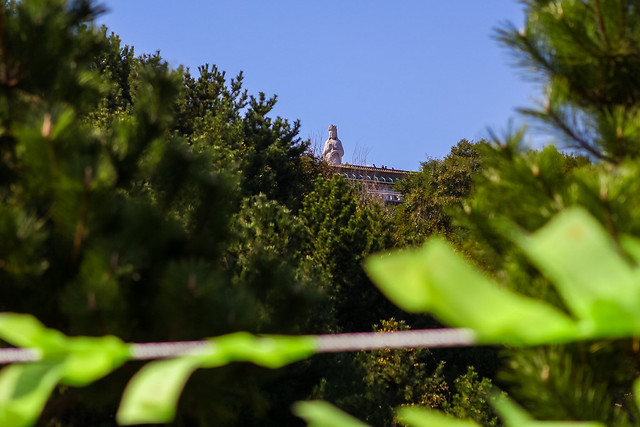

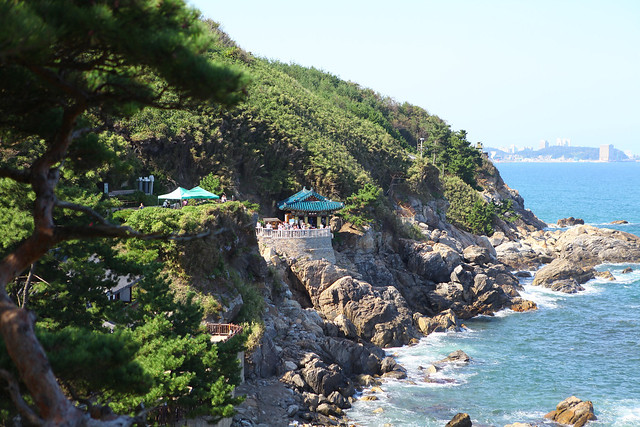

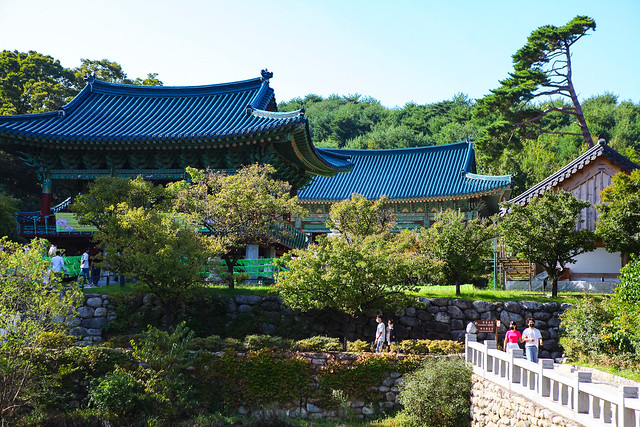
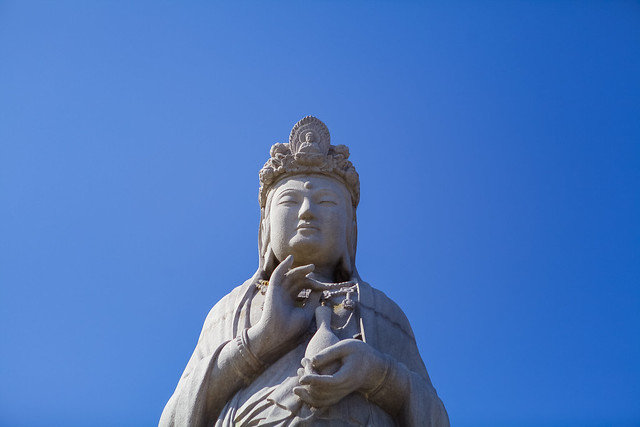



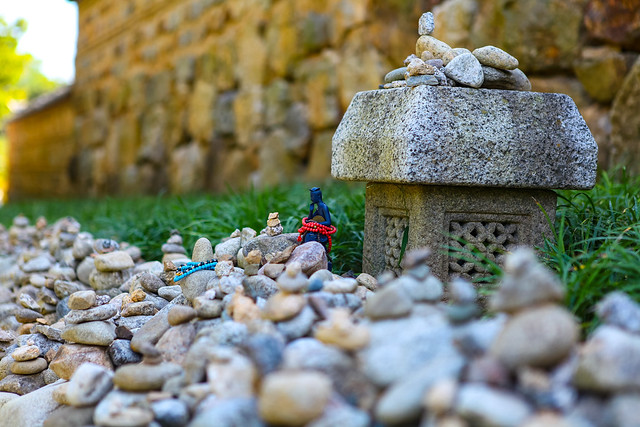





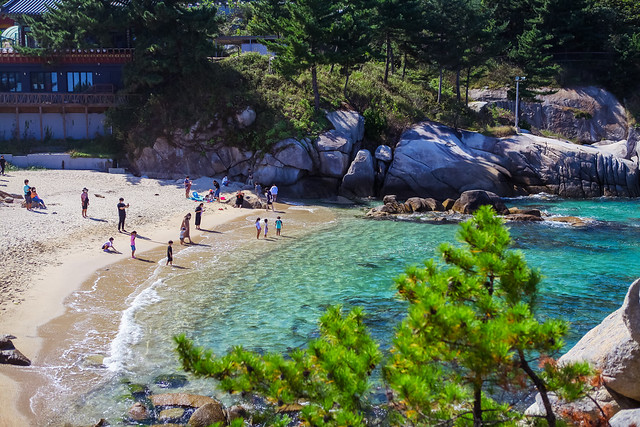


![DISCOVER THE CLAN JETTIES IN PENANG [MALAYSIA GUIDE]](https://afuncouple.com/wp-content/uploads/2023/05/Clan-Jetties-in-Penang_Malaysia-2-768x512.webp)
![10 BEST DAY TRIPS FROM TOKYO [JAPAN GUIDE]](https://afuncouple.com/wp-content/uploads/2023/04/Best-things-to-see-in-Nikko-36-768x512.jpg)
![VISIT SHIRAKAWA-GO AND GOKAYAMA [ULTIMATE JAPAN GUIDE]](https://afuncouple.com/wp-content/uploads/2023/01/Best-things-to-see-in-Shirakawa-go-5-768x512.jpg)

![HAEUNDAE BEACH IN BUSAN – BEST THINGS TO DO [KOREA]](https://afuncouple.com/wp-content/uploads/2021/07/Haeundae-Beach-Busan-05-768x575.jpg)